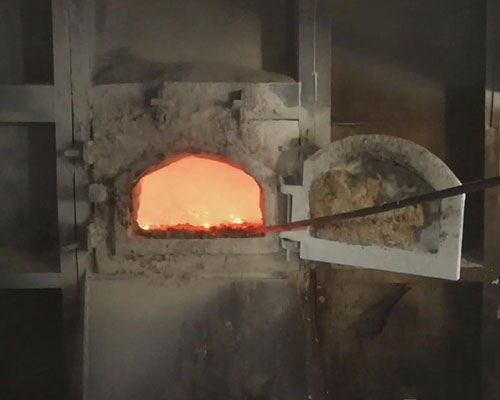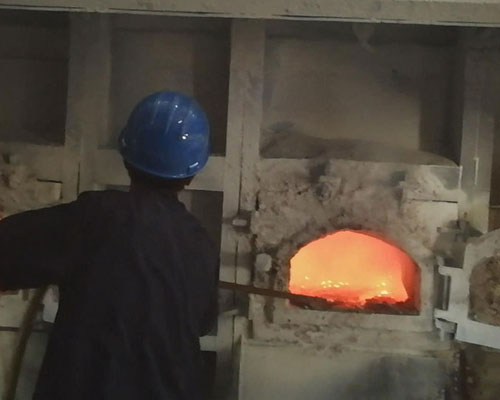The alloy liquid in the production process of die-casting parts needs to be refined. The adsorption refining method of casting aluminum alloy liquid mainly includes the methods of introducing N2 gas, Ar gas, chlorine gas, mixed gas refining and using chloride salt refining. The basic principle is to die-cast aluminum alloy Inject gas or add a solvent to the die-cast aluminum alloy liquid to react with the alloy liquid to obtain hydrogen-free bubbles, and then use these small bubbles to absorb hydrogen and oxidized inclusions during the floating process, and entrain them to the die-cast alloy liquid surface, achieve the degassing and slag removal effect.
By blowing into the die-cast aluminum alloy liquid an inert gas that is neither soluble in the die-cast aluminum alloy liquid nor reacts with hydrogen, hydrogen-free bubbles are obtained. Because these small bubbles in the process of floating, on the one hand they will adsorb AL203 and other inclusions, on the other hand they will also clamp the pressure difference between the nitrogen or argon bubbles and the alloy liquid contact surface, and suck the hydrogen dissolved in the alloy liquid into the bubbles. Inside. When the bubbles adsorbing inclusions and/or hydrogen float to the liquid surface and are eliminated, the purpose of degassing and slag removal can be achieved.
When refining method of casting aluminum is carried out using nitrogen or argon refining, the aeration time is generally 10 to 20 minutes. At the same time, since nitrogen will react with aluminum at 725°C to 730°C to form a large amount of alumina inclusions, the temperature of the die-casting aluminum alloy liquid is generally controlled below 720°C when refining with nitrogen. In addition, because nitrogen and magnesium easily react to form magnesium nitride inclusions, all AL-Mg alloys generally do not need to be refined with nitrogen.

Although the active gas chlorine is insoluble in the die-casting aluminum alloy liquid, it can react strongly with aluminum and hydrogen dissolved in the die-casting aluminum alloy liquid to generate HCL and ALCL3 gases that are insoluble in the die-casting aluminum alloy liquid.
Its refining speech effect is much better than using a single gas argon or nitrogen. Generally, the temperature of the die-casting aluminum alloy liquid is generally controlled at 690-720℃ when chlorine gas is used for concise treatment, but the chlorine gas time varies according to different alloy systems. For AL-Si alloys, the gas ventilation time is generally 10 To 15 minutes, while for AL-Cu series alloys, the ventilation time is generally 5 to 7 minutes.
Although the effect of chlorine gas refining is better, the whole set of equipment is more complicated, and the chlorine gas is toxic, harmful to the human body and corrosive to the equipment and the environment. Therefore, it is not used alone at home and abroad, but is used in combination with gases such as nitrogen.

